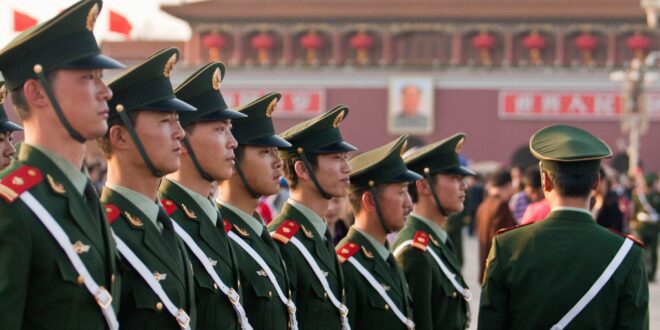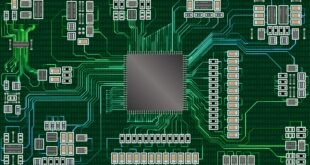The PLA has carefully studied the use of network-centric militaries such as the US Army and observed the reliance of those organisations upon information as a key element of their technological superiority. A theoretical representation of the centrality of information to western methods of warfare is provided by the Observe, Orient, Decide, Act (OODA) loop as described by John Boyd.
The first step of the OODA loop to some extent defines what follows and is reliant upon gathering information about an opponent. The PLA has reasoned that by disrupting that phase of the decision-making cycle – as well as the flow of information to the functions that follow – it is potentially possible to fundamentally unhinge an opponent and disaggregate its way of war.
Echoes of Chairman Mao and Sun Tzu
The role of information disruption in PLA thinking was apparent from the 1990s, although echoes of it can be found in the writings of Chairman Mao and even Sun Tzu. At that stage, it had become known as information warfare and it was considered to be relevant to all levels of warfare, from strategically denying an enemy information that would allow its leaders to declare war, to the tactical level by limiting the information available to targeting networks. At the time, Chinese military thinkers viewed information warfare as a means to allow the PLA to compensate for its conventional weakness compared with the US.
The anticipated conflicts that accompanied this paradigm were referred to as “local wars under modern high technology conditions.” The central role of information had been established by 2004 when the PLA’s Strategic Guidelines were amended to define war of that epoch as “local wars under conditions of informationisation.” This change reflected the fact that, as far as the PLA could tell, informationised warfare had become the basic form of conflict by that time.
Further revisions to the Strategic Guidelines in 2015 emphasised that information was no longer an important condition for modern warfare but played a dominant role and provided new ways for a war to be won.
The 2019 Chinese White Paper on defence indicated that informationised warfare was evolving into intelligencised warfare through the development of artificial intelligence. However, this appears to represent a horizon capability towards which the PLA is working. In the meantime, the role of disrupting information in what the PLA’s terms systems confrontation is pivotal to its concept of operations and theory of victory.
Information dominance
The PLA’s theory of victory holds that a force will lose the will to fight once its operational system has been defeated and can no longer function. The PLA is building its own operational systems designed to locate the nodes that are central to the opponent’s operational system and “prevail in system-vs-system operations featuring information dominance, precision strikes, and joint operations”.
The PLA seeks information dominance by disrupting the flow of information into the enemy’s system using a combination of kinetic and non-kinetic effects.
According to Jeffrey Engstrom in his 2018 paper published by RAND Corporation, the PLA’s operational systems would be built according to the conflict and the nature of the opponent. He further states that information dominance is seen as key to gaining dominance in all other operational domains.
The broad strokes defining how the PLA seeks information dominance is by disrupting the flow of information into the enemy’s system using a combination of kinetic and non-kinetic effects. This could, for example, include a combination of precision airstrikes with well-timed cyber effects to act against an opponent’s operational system and provide a window of opportunity for action.
The importance of information dominance is underlined by the PLA in the publication Service and Arms Application in Joint Operations, which was translated and published by the China Aerospace Studies Institute in 2021.
The document states that “In the process of operational actions, it is not only necessary to fully consider troop strengths, offensive and defensive actions and firepower attack actions, but it is also necessary to meticulously organise information warfare actions, including information offence and defence.” The paper adds that it is necessary to coordinate with the information effects that are undertaken by other services including the navy and air force.
Primary targets
Key to success in this regard is knowledge of the enemy’s processes and institutions, and PLA writings state that it is the responsibility of officers to study the enemy and understand the capabilities of the task organised units.
The primary targets for attack within the PLA concept of operations are “the enemy’s ground operations groups, command and control systems, weapons and equipment systems, electronic communications systems, and assistance and support systems.” This is achieved through several means that start with information reconnaissance using electronic warfare (EW), radar and optical reconnaissance, both ground and air-based, as well as other national intelligence assets coordinated through the Joint Strategic Support Force.
Disruption of the enemy’s access to information is achieved through the operational system’s task-organised assets. This might include EW units locating and isolating a command unit from its subordinate formations, the delivery of coordinated psychological and kinetic effects, or straightforward kinetic engagements of enemy reconnaissance systems. The PLA seeks to achieve this throughout the depth of an opponent’s formation and, if possible, isolate enemy formations from their support and command networks, enabling them to be annihilated in detail by the formation’s manoeuvre assets.
Ultimately, the PLA is an organisation in flux, although it is solidifying its concepts of operations around a few core beliefs. One of them is the control of information and the enemy’s ability to access it. However, whilst information dominance, exploitation and disruption is a priority for a Chinese operational system, it is important to emphasise that its theory of victory holds annihilation of the enemy and preservation of one’s own forces as two essential tenets.
Disrupting the opponent’s access to information, as well as the quality of information received, is perceived as the most effective way of achieving this. This is especially so for an opponent that is thought to be critically reliant upon information-enabled technology.
 Eurasia Press & News
Eurasia Press & News




